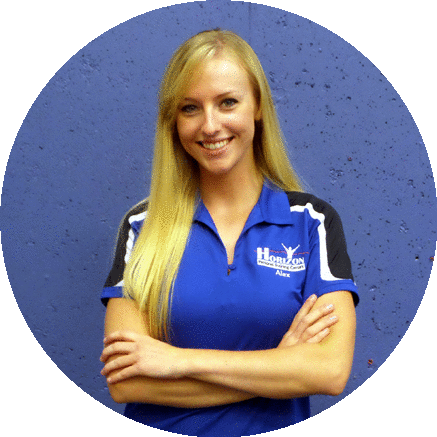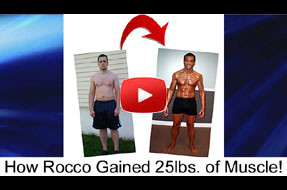Newington CT Personal Trainer Clarifies Lower Body Functional Training

Lower Body Fundamental Movements
When most people incorrectly discuss functional personal training in Newington CT, they usually focus on full body exercises. In this installment I am going to focus on the 3 main fundamental movements of the Lower Body. Fundamental Movements or movements that are necessary to the average persons every day life. These are movements that the body is made to do and should be trained in the gym to help improve the “functionality” of a client’s daily demands. The 3 main fundamental movements of the lower body are: the squat, the lunge, and the hinge. You may be thinking to yourself that these movements sound like a bodybuilder’s dream, and you are trying to figure out how they’d relate to. We will dig deeper into how these movement patterns will fit into your everyday life.
Personal Trainer in Newington, CT on squats…
While functional training with your personal trainer in Newington CT, pulling exercises are one of the most commonly performed and favorite exercises. The squat is one of the most crucial movements necessary for every individual! When we discuss a squat, we are not talking about a power lifter standing in a squat rack with 800 pounds on their back. Why is the squat so important? Have you ever seen a toddler pick a toy up off the ground? When they do, they perform a perfect, beautiful squat, full depth and perfect positioning! The squat is a movement that the body is designed to perform, but over time people create compensations that limit mobility. These compensations can be created by inefficient movement patterns that have been learned over time. As the top personal trainer in Newington CT, it is my job to teach clients the proper correctives to help realign the body, and create new movement patterns that make the squat doable again.
How does a squat fit into the average persons life? Well, in its most basic form, the squat is a movement pattern that involves two planted feet and triple flexion of the hip, knee, and ankle to lower the body’s center of gravity down; and then an action of triple extension of the ankle, knee, and hip to raise the body’s center of gravity up. Now barring all of the technical jargon; anytime you sit up or down from a chair, couch, or getting out of your car you are doing a squat. The majority of positioning in a myriad of sports involves being in a squat. Squatting is key for every person’s life.
When performing a squat for exercise, there are various ways to perform the squat. There is not one kind of squat that is perfect for everyone and individualization will be necessary to fine what squat would be best for the client being trained. There are also progressions that can be followed that will take a client from a basic body weight squat all the way a strategic and technical overhead squat. Deciding which squat is best can be determined on a person’s range of motion and mobility and physical needs of the personal training client’s everyday life or sport.
Personal Trainer in Newington, CT on lunges…
As your personal trainer in Newington Connecticut I am a firm believer in the lunge! The lunge can be considered a subset of the squat, but it is a single leg dominant version. The lunge is a dreaded exercise that you don’t always see very often. Why are they so looked down upon? First and foremost, the lunge is hard. It is a complicated multi-joint exercise that will expose any kinks in the kinetic chain. Since they are technical and single legged, they are very difficult to go super heavy with, which is why many heavy lifters will tend to avoid them. So with all the “negatives,” why are they so important?
There are many times that clients are lunging in their everyday life, without even knowing about it. Any time a client is walking; jogging; running; sprinting; going up/down stairs; pushing off on ice skates; etc. they are performing a lunge. Anytime a client is moving where there is a temporary state of single leg dominance they are performing a lunge. There are multiple different versions of the lunge that can cover various movement patterns as well as increasing levels of difficulty and progression. Different lunge patterns and exercises will cover the basis of every position in there is loaded, single leg dominant, movement. Lunges can be: forward lunges, reverse lunges, lateral lunges, Bulgarians, front foot raised lunge, and every variation of these movements that disperse the load differently: goblet, hands at your side, overhead, bodyweight, etc. This is just a small list of possible lunge variations that are out there.
Personal Trainer in Newington, CT on the hinge…
The final lower body fundamental movement pattern is going to be the hip hinge. As Newington’s top personal trainer, I firmly believe that this is the movement pattern that will make one of the most impactful differences in a client’s life. The hip hinge’s main focus is to stabilize and strengthen the lower back and the rest of the posterior chain. The number one ailment that clients have, when they first come to see me, is a sore low back. I explain to them that more often than not the reason for this is a lifetime of inefficient movement. How many times a day does the average person bend over, whether it is to tie their shoes or to pick something up off the ground, bending over is an unavoidable movement. Because of this we use hip hinge exercises to strengthen all of the muscles necessary to probably bend over and support that low back. The body is a kinetic chain and therefore needs to be thought of as a chain. The weakest link of any chain is going to be the breaking point. For this reason, we want to put a lot of emphasis on hip hinge exercises to strengthen that “weak” link as much as possible.
Hip hinges have an extensive amount of exercises connected to them is picking the right one and the right progressions are key. Options include, but aren’t limited to: Kettlebell swings, Deadlifts, Rack pulls, RDLs, etc. The first thing a novice client is going to say is “Deadlifts!? Aren’t those DANGEROUS?” and the answer is no, they are not BUT they can be. There is a risk in performing any exercise, and we have already established that we will be targeting a weak link with this exercise. This is where it is imperative that a client has the guidance of a Nationally Certified Personal Trainer to ensure that there is proper form, weight, and progression with these exercises. When done correctly they are perfectly safe and are second to none when the goal is to strengthen the posterior chain. As your personal trainer in Newington Connecticut I am a firm believer in the hinge!
When the above fundamental Movement patterns are implemented into a well-rounded, individualized training program, clients will thrive and see amazing results in their day-to-day life. This is where the term “functional training” should be focused NOT on the showy parlor tricks that are often demonstrated and marketed as “functional movements”.
If you’re looking to be functional, you certainly want to avoid sickness through proper nutrition with your Personal Trainer in Newington!







